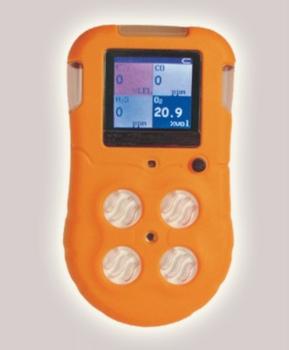Gas detector use matters needing attention
 It is understood that with the development of the economy, China's manufacturing industry has witnessed significant development, and it has also brought with it the development of related instrumentation. Among them, the use of gas detectors requires attention.
It is understood that with the development of the economy, China's manufacturing industry has witnessed significant development, and it has also brought with it the development of related instrumentation. Among them, the use of gas detectors requires attention. It should be noted that, when selecting this kind of detection instrument, it is best to select an instrument that has a separate switch for each sensor function to prevent the use of one sensor from affecting other sensors. At the same time, in order to avoid clogging of the suction pump due to water ingress, it is also safer to select a smart pump design with a pump stop alarm.
1) Pay attention to regular calibration and testing.
Toxic and harmful gas detectors are also used in the same way as other analytical testing instruments. They are measured using a relatively simple method: First, a zero gas and a standard concentration of gas are used to calibrate the instrument. The calibration curve is stored in the instrument. During the measurement, the instrument compares the electrical signal generated by the gas concentration to be measured with the electrical signal of the standard concentration and calculates the accurate gas concentration value. Therefore, zero calibration of the instrument at any time, and regular calibration of the instrument is an indispensable task to ensure accurate measurement of the instrument. It should be noted that at present, many gas detectors can replace the detection sensors. However, this does not mean that one detector can be equipped with different detector probes at any time. Whenever a probe is replaced, the instrument must be recalibrated in addition to a certain sensor activation time. In addition, it is recommended to respond to the standard gas of the instrument before using it to ensure that the instrument really protects the instrument.
2) Pay attention to the detection interference between various sensors.
In general, each sensor corresponds to a specific test gas, but any gas detector may not be absolutely effective. Therefore, when selecting a gas sensor, it is necessary to know as much as possible the interference of other gases to the sensor, so as to ensure accurate detection of the specific gas.
3) Pay attention to the life of various sensors:
All kinds of gas sensors have a certain useful life, that is, life. In general, in portable instruments, LEL sensors have a long life, generally about three years; photoionization detectors have a life expectancy of four years or more; electrochemical specific gas sensors have a relatively short lifespan. In one to two years, the oxygen sensor has the shortest life, which is about one year. The life of the electrochemical sensor depends on the dryness of the electrolyte, so if it is not used for a long time, sealing it in a lower temperature environment can prolong the service life. Because of the relatively large size of the stationary instrument, the life of the sensor is longer. Therefore, it is necessary to detect the sensor at any time and use it within the effective period of the sensor as soon as possible. If it fails, replace it in time.
4) Pay attention to the measuring range of the measuring instrument:
Various toxic and harmful gas detectors have their fixed detection range. Only when the measurement is completed within its measurement range can the instrument be accurately measured. However, measuring over a long period of time may cause permanent damage to the sensor.
For example, if the LEL detector is inadvertently used in a 100% LEL environment, it may burn the sensor completely. Toxic gas detectors can also cause damage if used for a long time at higher concentrations. Therefore, if a fixed-type instrument emits an over-limit signal during use, the measurement circuit must be turned off immediately to ensure the safety of the sensor.
Table Common Gas Sensor Concentration Detection Range, Resolution, Permissible Concentration and Maximum Acceptable Concentration In short, the toxic and harmful gas detector is a powerful tool for ensuring industrial safety and staff health. We must choose the right gas detector according to the specific environment and the required function. At present, the detectors available for our selection include various combinations of fixed/portable, diffusion/pumping, single/multiple gases, inorganic/organic gases, and the like. Only by choosing the right gas detection equipment can we really do more with less and take preventive measures.
Salvage Airbag,Inflatable Buoyancy Bags ,Marine Salvage Airbags ,Salvage Cars
Centrifugal Pump Co., Ltd. , http://www.luhangfender.com